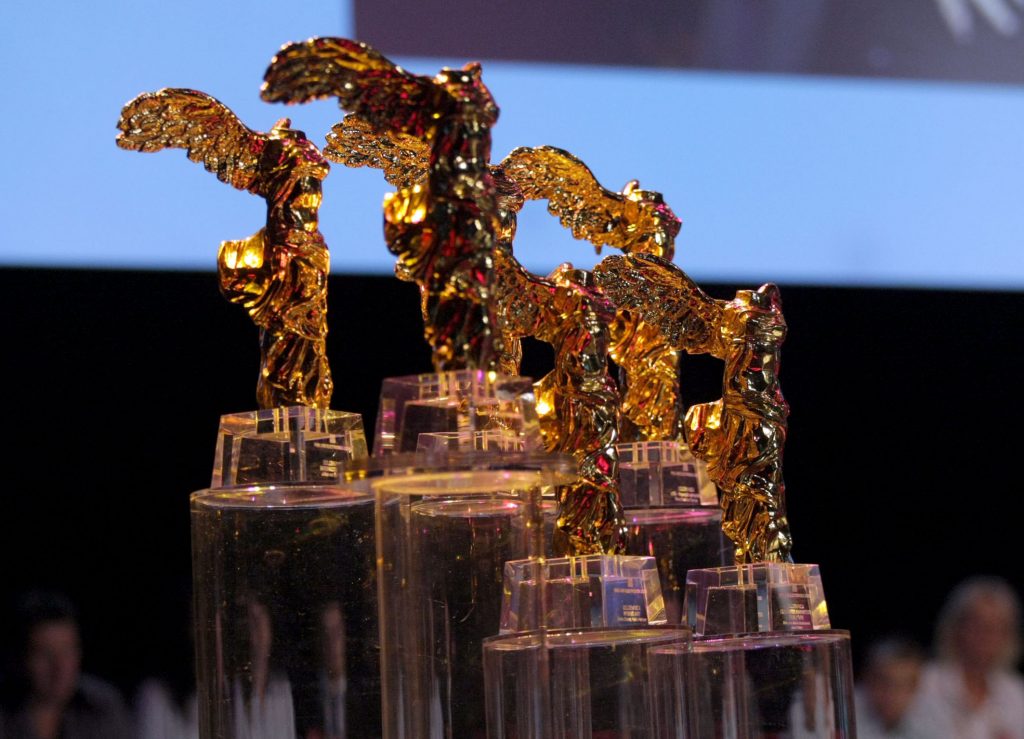
Prix Ars Electronica 2019: Artificial Intelligence & Life Art
Every year, it’s one of the most important events in media art: When the winners of the long-standing Prix Ars Electronica are announced, creative minds from all over the world watch closely.
This year, it will be even a little more exciting than usually: In addition to the existing Computer Animation, Digital Musics & Sound Art and U19 – CREATE YOUR WORLD categories, entries can also be submitted in the new Artificial Intelligence & Life Artcategory for the very first time in 2019 (from January 16, 2019 to March 11, 2019, here).
“This is the avant-garde of our time,” says Gerfried Stocker, Artistic Director of Ars Electronica, describing the work in these two areas. In an interview, he and Emiko Ogawa, director of Prix Ars Electronica, reveal what else is concealed behind the new category and why is exactly the right moment to look in the direction of AI and Life Arts.
This year, there is a new category at Prix Ars Electronica: “Artificial Intelligence & Life Art”. Why did you see the need for the introduction of these two fields to Prix Ars Electronica now?
Gerfried Stocker: Well, for one, Artificial Intelligence has become a very exciting area for artistic exploration. It is a topic that, because of the many implications that it has, is highly relevant for society, for cultural and artistic intervention.
The new category looks at the artistic experiments and work with this new technology, but emphasizing in particular the importance of artistic engagement and intervention in the larger field of development or influence that AI has on our society and culture.
Even if we might consider it a hype, looking at the huge attention that it gets at the moment, AI really is a game changer. For technical reasons, but I think even more so because it immediately addresses and reaches out for the attention of a much wider audience than any other digital technology before. This is why artistic work within this field is tremendously important, for art and for society.
The same goes for what we summarized with the term Life Art, encompassing all those artistic works, experiments and endeavors that are engaging in the fields of biotechnology, synthetic technology, and genetic engineering. Almost every day we get exciting, often also terrifying news of how genetic engineering is progressing, whether it is in the field of extremely interesting research that allows us to get a completely new picture of the way how humanity started to exist and spread over the planet, or whether it is the terrifying news of genetically modified babies, where at the end we don’t really know if it’s just a media hype or really happening.

What all these things show is that these are sciences and technologies that deeply concern humanity, that deeply concern society, that deeply concern culture. Artists working in this field are pioneers. This is the avant-garde of our time. And this is what we want to single out and celebrate: The role of artists, engaging in these highly relevant frontiers of scientific and technological developments.
Both of these areas are very touchy subjects, ethics and morality play a big role. Which added value does the artist’s perspective bring to the table?
Emiko Ogawa: Life Art is a good example for the kind of new field that we want to discuss with artists. I believe that in this area, we can really try to discuss and make it approachable. We want to think about the impact of this technology in an artistic way, together with artists, but also together with other citizens.
As with every cutting-edge technology, it’s not easy to understand what the impact will be for our lives or for the future of humanity itself. Artists are sensitive to these topics, they are pioneers, and they are trying out these cutting-edge technologies and applying them to real life. Actually, it doesn’t even have to be cutting-edge – they could just be working with new ways of using existing technologies. This creates a bridge for other people. It helps us understand the technology, makes us think about how humanity will look like or how we want to live in the future.
Gerfried Stocker: I also think it’s important in this context to state that of course, scientists working in these fields, whether it’s genetic engineering or bio-technology or also Artificial Intelligence, have a very high ethical and moral standard and concern. It’s not like we need artists to be the ethical apostles of our society.
Nevertheless – the point is when you work as a scientist, your concern is and has to be scientific advancement. As an artist, you have a different focus that addresses human aspects, cultural aspects, socio-political aspects. What artists are doing when they engage in these technologies and sciences is that put their projects out of the context of the laboratories and the research institutes and into the context of galleries, concerts, festivals, public spaces.

They, in an exemplary way, show us what happens when you take these sciences, these technologies out of the laboratory. Usually in the early development of technologies and sciences, we all tend to see them inside of science and research, which is a protected space, but also something we can quite easily ignore. But the moment that artists are taking it out of this context, they, in a certain way, prepare us or make us aware, that at one time or another all these technologies, all these sciences, will leave these protected and safe spaces of research, science, and development and will become part of our daily lives. So this is in a very pragmatic way one of the visionary pioneering functions that art has.
What art is doing is to kick us into direct confrontation with all the meaning and impact that these technologies can have. This is an effect that artistic work has beyond the artistic environment, it’s an impact that goes far beyond what the artistic aspect of it is.
This seems especially interesting since these two fields, most of all AI, are often discussed as being black boxes, the general idea being: You don’t understand what’s happening inside, and also, you’re okay with it.
Gerfried Stocker: You know, the word “Black Box” even sounds pretty nice, actually. The next step is that these technologies are considered magic, the next worse step is that they are demonic. This way, we create a confrontation between society, individuals and this technology that is the wrong type of confrontation.
There is a lot of critical, dangerous potential in this development. We have to make sure that we are, so to say, fighting the right enemy: The moment we put these technologies away in a sort of “magical black box demon”, we are not able to fight the right problems in the right place any more. We have to critically look at these technological developments, not because they are demons we don’t understand and whom we are afraid of – but because of the impacts they will have on society.
We have to approach them in a competent, experienced, empowered way, even if we are not scientists. This is a dilemma, because of course we don’t understand the scientific principles and the technological processes, whether it’s AI or Life Art. But they concern us!

This is where it’s interesting, this is where art can intermediate, between the society and technology, without forcing people to study the digital or biological bases in depth. When it comes to Life Art, the term provocative is very soon on the table. Yes, I think it is provoking – but in the best way of it! Because it is thought-provoking. It means you are confronted with these works of art and you almost have no chance to not think about the implications any more. This is bridging the distance we can so easily build up to science. This is the strength of art.
Emiko Ogawa: Surprisingly, the speed in which technological developments spill over from the science and research are to our everyday lives is getting faster and faster. We only need to look at the past 20 years to see this, be it with genetically modifying food or plants or self-driving cars, to name just some examples. Of course it is being discussed that they are provocative, as are the ethical issues of course, but more than this, we are seeing a very special moment where these technologies – and artworks using them – are becoming normal. It’s an amazing way to think about technology! There is Alexa in our home, we have self-driving cars on the street, all these developments are coming to us. And they are coming to us as services.
Usually we take service because they are comfortable, not to make us think. We, as consumers, might just use these technologies because it’s easy, but we might neglect to think about ethical issues or other really important factors for us as humans. So it’s important that artists show us this moment: Yes, these technologies are nice, but there are a few things to consider. We humans might just follow a service without thinking, when in reality, how our society develops should be considered by all of us.
Gerfried Stocker: Art is the second opinion for future developments. Like with any difficult decision we have to make, in particular medical decisions, we want to have a second opinion. Usually we accept and appreciate the expertise of people where we get the first opinion, but we have learned that a second opinion is important because we have to look at difficult and important things from different directions. And I think what art is providing to society is a second opinion to questions relating to future developments.




